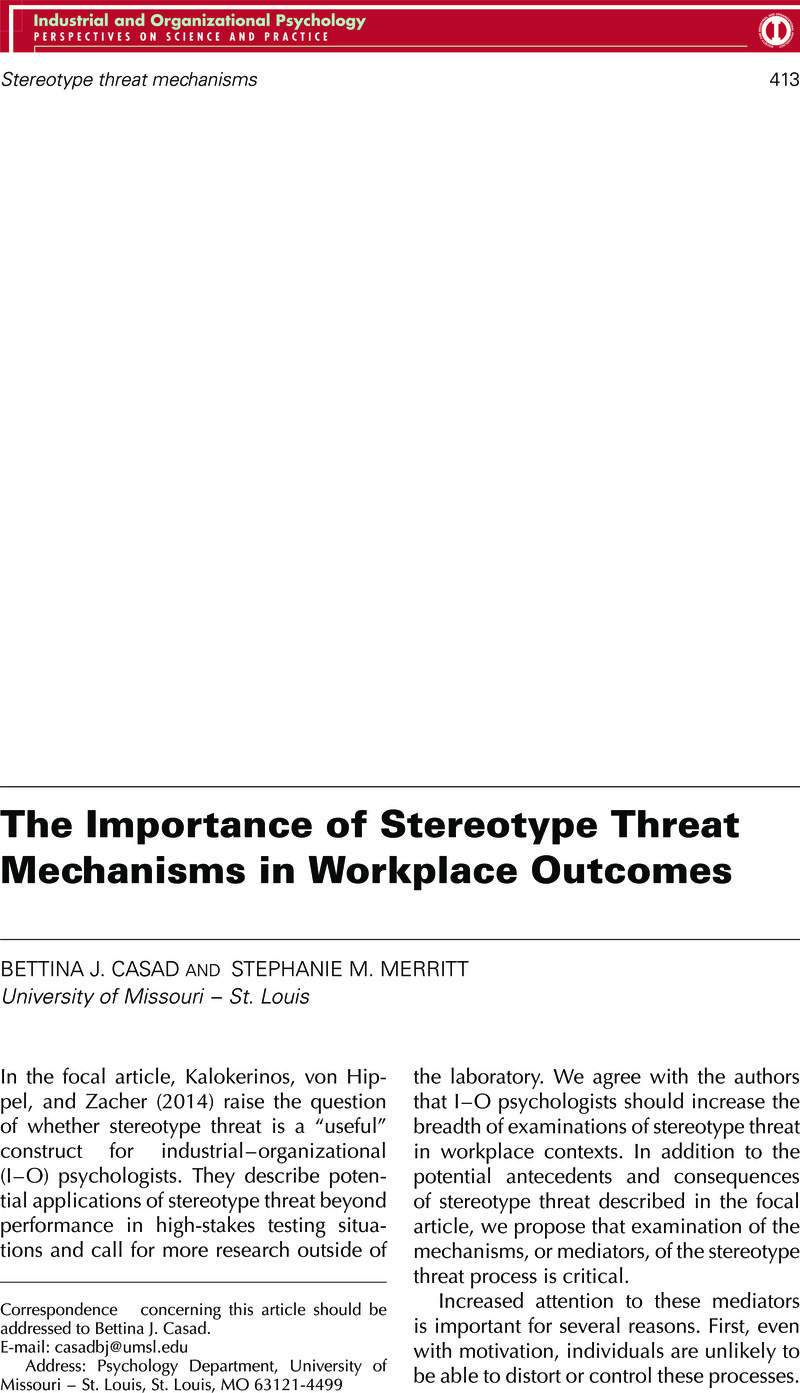Crossref Citations
This article has been cited by the following publications. This list is generated based on data provided by Crossref.
Casad, Bettina J.
and
Bryant, William J.
2016.
Addressing Stereotype Threat is Critical to Diversity and Inclusion in Organizational Psychology.
Frontiers in Psychology,
Vol. 7,
Issue. ,
Casad, Bettina J.
and
Petzel, Zachary W.
2018.
Heart Rate Variability Moderates Challenge and Threat Reactivity to Sexism Among Women in STEM.
Social Psychology,
Vol. 49,
Issue. 4,
p.
191.
Whysall, Zara
2018.
Hidden Inequalities in the Workplace.
p.
215.
Bolin, Mary K.
2023.
Refocusing Academic Libraries Through Learning and Discourse.
p.
55.
2023.
Refocusing Academic Libraries Through Learning and Discourse.
p.
119.
Piotrowska, Barbara
and
Barratt, John
2024.
Investigating low intelligence stereotype threat in adults with developmental dyslexia.
Dyslexia,
Vol. 30,
Issue. 2,
Swab, R. Gabrielle
and
Patel, Pankaj C.
2024.
What is in a [poverty] label? The effect of regional poverty labeling in the Appalachian region of the U.S. and self-employment.
Journal of Business Venturing Insights,
Vol. 21,
Issue. ,
p.
e00451.





